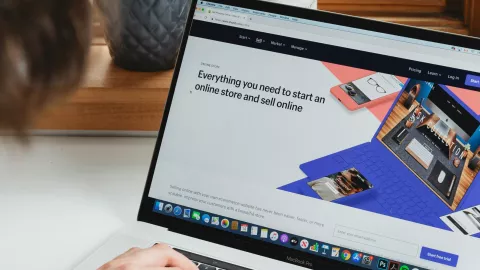
Trends in Corporate Website Development in 2025
In 2025, corporate websites will no longer be just a place where companies showcase their products and services. They will evolve into interactive, personalized, and integrated platforms that will enhance the user experience and support business objectives. Here are some of the most important trends in corporate website development that will define 2025.

OrgChart module
The OrgChart module for Drupal is a powerful tool for building organizational charts (org charts) on your website. It allows you to visually represent the hierarchical structure of your organization, making it easier for users to understand roles, departments, and reporting structures. This module provides a user-friendly interface for creating and displaying these charts.

Petitions module for Drupal
The Petitions module for Drupal is a powerful tool that allows users to create, manage, and sign petitions directly on a Drupal-powered website. This module provides a simple and effective way to gather support for various causes, making it ideal for nonprofits, advocacy groups, political campaigns, or any organization that needs to collect signatures for petitions online.
Key Features of the Petitions Module
Petition Creation:

Building Multi-Vendor Marketplace with Mercatus
In today's digital economy, multi-vendor marketplaces are reshaping how products and services are bought and sold online. Platforms like Amazon, Etsy, and eBay have set a high standard — and now businesses of all sizes are seeking ways to launch their own scalable, secure, and customizable marketplaces. Enter Mercatus, a powerful framework for building robust multi-vendor eCommerce platforms.

Typical Custom Content Types for Corporate Websites
Modern corporate websites are more than digital brochures—they are dynamic platforms for engaging customers, providing resources, and showcasing expertise. To manage and structure this content efficiently, Content Management Systems (CMS) like Drupal or WordPress often rely on custom content types. These help content editors maintain consistency, simplify workflows, and enhance user experience.
Let’s explore the most commonly used custom content types found on corporate websites.

Get the right maintenance services
An app maintenance service agreement is a contract between the app developer or service provider and the client, outlining the terms and conditions for maintaining and supporting the app. A typical app maintenance service agreement would typically include the following elements:
Scope of work: This section outlines the specific tasks and responsibilities of the service provider, such as software updates, bug fixes, security patches, and performance improvements.

Digital Insurance Customer Journey
By 2024; insurers expect their industry to be fully transformed to embrace automation and digital technologies in a bid to meet the demands of their customers for more intuitive and convenient user experiences. However; the first major step before starting to draft your own insurance business' transformation strategy will be to better understand your customers and prospects' behaviors.

The importance of responsive design in today's digital landscape.
The importance of responsive design in today's digital landscape.
How to effectively use A/B testing to optimize website performance.
The benefits of incorporating a chatbot into a website.
The role of AI in web development and its future implications.
The latest web design trends and how to incorporate them into your clients' websites.

Drupal Migrator -the perfect tool for migration automation
In the ever-evolving digital realm, keeping up with technological advancements is crucial for maintaining a strong online presence. This includes migrating websites from older CMS versions like Drupal 7 to the more secure and feature-rich Drupal 10. While manual migration can be complex and time-consuming, automation offers an efficient solution that simplifies the process and reduces potential risks.